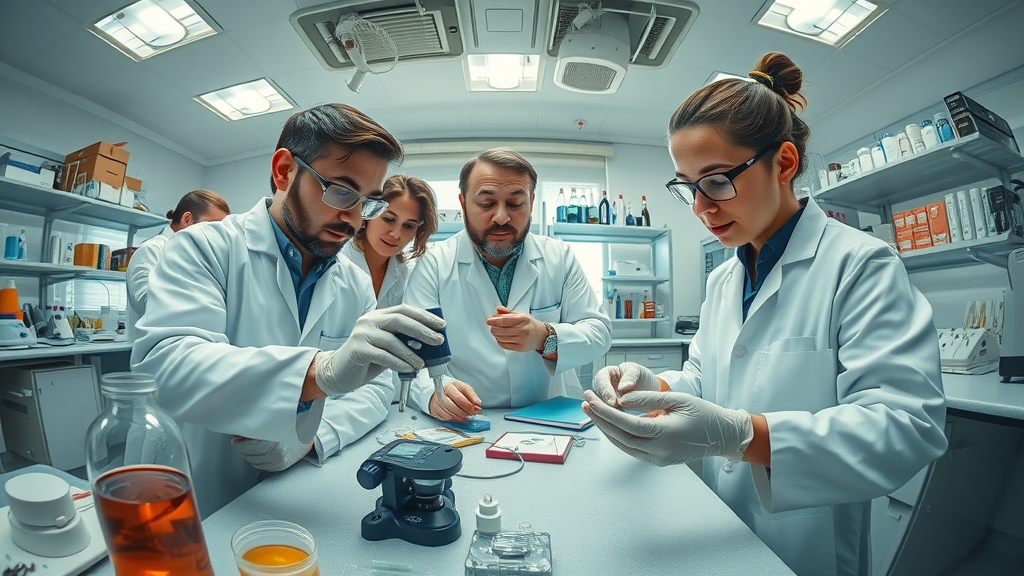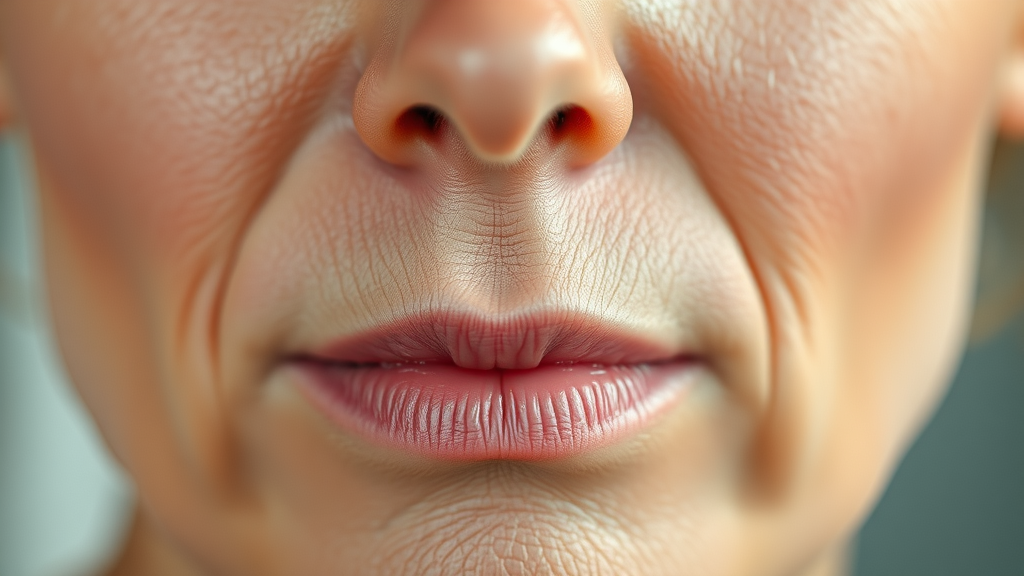Did you know that the world's leading scientists are on the brink of unlocking the secret to reversing the aging process? This revelation might just redefine how we view growing older. Imagine a future where age is merely a number, irrelevant to the vitality and vigor of your spirit. In this article, we'll delve into the scientific breakthroughs that promise to turn the fountain of youth from myth to reality.
Unveiling the Fountain of Youth
The concept of a fountain of youth has intrigued humanity for centuries, often depicted in myths, it signifies the unquenchable desire to halt time's inexorable march. Today, this dream inches closer to reality through groundbreaking reverse aging innovations. From cellular rejuvenation to advanced stem cell therapies, researchers are crafting a path forward that may forever alter the human aging process. Our discussion begins with recent scientific strides in reverse aging and the pivotal role of biological age.
Current Discoveries in Reverse Aging
The field of reverse aging is witnessing an unprecedented surge in research and breakthroughs. Scientists are making strides in cellular reprogramming techniques, notably with Yamanaka factors , which are pivotal in transforming mature cells back into a youthful state. These induced pluripotent stem cells hold the potential to regenerate damaged tissues, paving the way for novel anti-aging therapies. Additionally, recent advances in understanding cellular senescence —the state where old cells cease dividing and release harmful substances—are fundamental in developing treatments to slow aging.

The Role of Biological Age in Aging Process
The true measure of aging is not the number of years lived but the biological age that reflects the condition of our bodies at a cellular level. As research progresses, the focus shifts to leveraging biological age as a more accurate indicator for developing anti-aging strategies. By assessing DNA methylation patterns, scientists predict not only the biological age of human cells but also their potential for renewal and repair.
How Stem Cells Contribute to Reverse Aging
Stem cells, with their remarkable ability to develop into various cell types, are at the forefront of anti-aging research. Their potential to regenerate damaged tissues and maintain organ functionality makes them pivotal in reversing age-related degeneration. Ongoing clinical trials are exploring the efficacy of stem cells in rejuvenating organs and slowing the progression of age-related disorders like heart disease .
Analyzing the Reverse Aging Breakthrough
Insights into Stem Cells and Aging Reversal
The prospect of stem cells reversing aging lies in their regenerative capacities. Through targeted therapies, induced pluripotent stem cells could rejuvenate tissues, offering hope for treating age-associated ailments. The potential to delay or even reverse the gradual decline of human cells is being thoroughly investigated, holding promising implications for the future of longevity research.

Understanding Induced Pluripotent Stem Cells
Introduced by Dr. Shinya Yamanaka, induced pluripotent stem cells are adult cells genetically reprogrammed to an embryonic stem cell-like state. These reprogrammable cells are a cornerstone in aging reversal therapies and regenerative medicine, offering the potential to repair tissues, regenerate organs, and possibly abolish cellular age-related decline.
Influence of Pluripotent Stem Cell
The versatility of pluripotent stem cells facilitates exploring novel therapeutic avenues to combat the effects of aging. By assessing pluripotent stem cells’ ability to rejuvenate aged cells and tissues, researchers are at the brink of understanding how to extend the health span and potentially extend life itself.
David Sinclair's Perspective on Aging Reversal
"Aging is a disease; it’s treatable." - David Sinclair
The Science Behind Reverse Aging
David Sinclair, a prominent figure in longevity research, advocates the notion that aging is treatable. His groundbreaking studies at Harvard University explore the potential to reverse cellular aging with small molecules that influence sirtuin activity, promoting DNA repair and resilience against cellular damage. His work inspires a reimagined future where biological age could be managed like any treatable condition.
Future Insights and Predictions
Looking ahead, the continued research and development in reverse aging technologies promise new paradigms in medicine and wellness. As scientific advances evolve, the lines between myth and reality blur, hinting at a future where time may no longer dictate health and vitality.

What Breakthrough Reverses Skin Aging?
Recent Advancements in Skincare
In recent years, breakthroughs in skincare have focused on exploiting biological processes to maintain and restore youthful skin. Techniques employing advanced bioactive compounds and formulations target skin rejuvenation by stimulating collagen production and enhancing cellular turnover. For more insights on maintaining youthful skin, explore our 5 Breakthrough Tips to Reverse Aging Today .
Implementing Skin Aging Breakthroughs
The application of these innovative skincare technologies involves incorporating recently developed compounds into routine dermatological care, offering a practical approach to address the biological aging of the skin. Technologies such as RF microneedling and laser treatments are complemented by topicals containing peptides and growth factors. Discover more about effective skincare solutions in our article on Top Temporary Wrinkle Solutions Revealed .

Impact on Biological Age of Skin
As skincare advancements lag behind systemic anti-aging treatments, the biological age of skin becomes a critical measure. Improved topical treatments and enhanced procedural interventions aim to reduce the gap between the skin’s chronological and biological age, presenting tangible benefits for maintaining youthful integrity and appearance.
Decoding the Harvard Drug Cocktail to Reverse Aging
Key Components of the Harvard Cocktail
At the heart of the aging reversal efforts is the celebrated Harvard drug cocktail . This innovative concoction integrates compounds such as NAD boosters and resveratrol, enzymes that strategize on enhancing cellular repair mechanisms. Designed to combat age-related decline, it plays a seminal role in longevity research exploring age as a treatable syndrome.
Potential Benefits and Risks
While benefits of the Harvard cocktail are enticing, possible risks warrant careful consideration. Prolonged use without extensive empirical validation could pose unforeseen effects, necessitating robust regulatory oversight and ethical deliberation.
| Drug | Primary Effect | Potential Benefits | Risks |
|---|---|---|---|
| Resveratrol | Enhances DNA repair | Delays aging, supports heart health | Possible drug interactions |
| NAD Boosters | Improves mitochondrial function | Increases energy, reduces fatigue | Poor regulation in market |
Is it Possible to Reverse Cell Aging?
Scientific Advances in Cellular Aging
The scientific community edges closer to separating science fiction from achievable therapies aimed at combating cellular aging. Advances are observed in areas like gene editing and telomere extension that significantly alter human cell rejuvenation. Discoveries in cellular regeneration have broad implications across youth preservation, disease prevention, and beyond.

Challenges in Cell Aging Reversal
Despite promising findings, significant hurdles remain in the path to effective cell aging reversal. Ethical concerns, safety profiles, and consistent clinical trials present obstacles that require methodical approaches and transparent communication. The potential for reward calls for continued and diversified research backed by thorough quality assurance standards.
Top Methods to Address Cell Aging
- Advanced gene editing—optimizing cellular reprogramming methods
- Telomere extension—enabling potential to reverse cell aging at a genomic level
- Innovative drugs—leveraging small molecules for targeted therapies
Can an Aging Face be Reversed?
Modern Techniques in Facial Rejuvenation
The field of facial rejuvenation has dramatically evolved; from surgical diminishment of aging signs to non-invasive initiatives, the scope is vast. Techniques integrating injectable treatments, laser therapies, and autologous fat transfers empower patients to combat facial aging effectively.
Understanding Reverse Aging in Dermatology
In dermatology, the aim is not merely to halt the aging process but to actively reverse it. Topical formulations with retinoids and hydroxy acids combined with collagen stimulation treatments are cornerstones in resetting the skin’s biological age.
Guidelines for Maintaining Facial Youth
Comprehensive care involves consistent use of UV protection, adequate hydration, and a balanced diet. Avoiding environmental stressors, excessive sun exposure, and incorporating antioxidants help preserve youthfulness. Simple lifestyle adaptations can significantly enhance the efficacy of advanced dermatological interventions.
What You'll Learn
- Understanding the reverse aging breakthrough
- Insights from David Sinclair's research
- Current and future applications in skincare
Common FAQs on Reverse Aging
What Are the Most Promising Anti-Aging Technologies?
Currently, gene therapy and stem cell technologies top the list of promising anti-aging technologies. Additionally, advances in pharmacology, nutritional supplements, and regenerative medicine play a significant role in mitigating age-related deterioration.
How Effective Are the Latest Stem Cell Therapies?
Stem cell therapies offer substantial potential given their regenerative properties. Notably, stem cell-derived extracellular vesicles exhibit promising results in reducing inflammation and promoting tissue repair. Nevertheless, more empirical data and long-term observations are required to validate these therapies’ universal applicability.
What Lifestyle Changes Can Support Anti-Aging?
Key lifestyle adjustments include a balanced diet rich in antioxidants, regular physical activity, quality sleep, and stress management. Furthermore, prioritizing mental well-being and maintaining engaging social connections are equally critical in promoting lasting youthfulness and health.
Key Takeaways from the Reverse Aging Breakthrough
- Aging can be approached as a treatable condition
- Stem cells are pivotal in anti-aging strategies
- Innovation is key to controlling the effects of aging
Conclusion
Embracing the Future of Aging Reversal
The future is ripe with promise at the crossroads of cutting-edge science and age-old human quests. With continued innovation, tangible solutions to time's unfaltering passage may soon become standard.
The Role of Innovation in Leading Anti-Aging Therapies
Innovation remains paramount as science delves deeper into the mysteries of aging, illuminating paths where humanity's fervent pursuit of timelessness achieves new victories.
 Add Row
Add Row  Add
Add 



Write A Comment